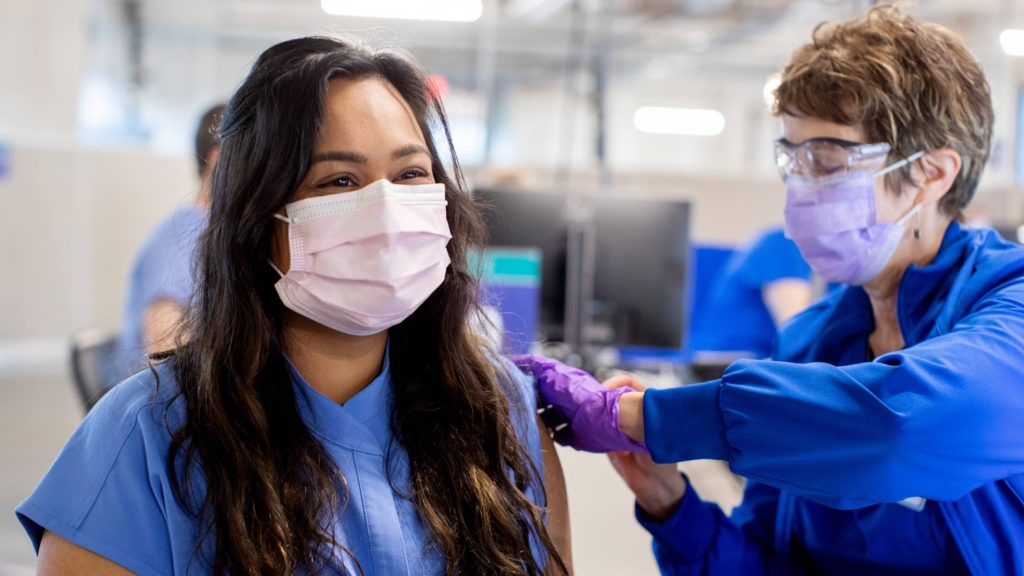
For some people, the second dose in a COVID-19 vaccination series is causing a stronger reaction and more side effects than the initial dose. That was also true during the clinical trials.
This may be a concern not only for those experiencing side effects, but also those who are worried a COVID-19 vaccine isn't working because they didn't have a reaction.
Dr. Gregory Poland, an infectious diseases expert and head of Mayo Clinic's Vaccine Research Group, says everybody is different. He says the first dose teaches your body to recognize the virus and the second vaccine is kicking the body's system into gear.
"It's as if you've started a cold car, with the first dose," says Dr. Poland. "The car is idling. Then you give it that second dose, and because the car has warmed up, you can put the pedal to the metal and go." But everybody is going to respond differently.
"Each of our bodies releases different amounts of chemicals, or immune signals. One body might release more than what's needed, causing more of a response, and someone else's body might release exactly the right amount. It's what we've called the 'Goldilocks phenomenon.' Not too much, not too little, but just right." — Dr. Greg Poland
Dr. Poland says a reaction does not mean anything is wrong. "It's an indication that your body is revved up, prepared to do battle against what it thinks is a foreign invader." If people have less of a reaction, it does not mean they aren't developing an immune response, Dr. Poland emphasizes.
Dr. Melanie Swift, co-chair of Mayo Clinic's COVID-19 Vaccine Allocation and Distribution Work Group, says all vaccines could cause some degree of reaction. The same is true with the COVID-19 vaccines.
"They do provoke an immune reaction, which can cause symptoms," says Dr. Swift. "That shouldn't be confused with being harmful or being unsafe. It's what the vaccine is intended to do."
Watch: Dr. Melanie Swift discusses COVID-19 vaccines symptoms.
Journalists: Broadcast-quality sound bites with Dr. Swift are available in the downloads at the end of the post. Please courtesy: "Melanie Swift, M.D. / COVID-19 Vaccine Allocation and Distribution / Mayo Clinic."
After you are vaccinated for COVID-19, especially the second dose of the two-dose series, Dr. Swift says to be prepared for these possible side effects:
- Muscle aches
- Chills
- Slight fever
- Headache
- Fatigue
Dr. Poland reminds people that these side effects generally go away with minimal or no treatment. And that treating the side effects is easier than treating COVID-19.
"Each of our bodies releases different amounts of chemicals or immune signals," Dr. Poland explains further. "One body might release more than what's needed, causing the physical reactions, and another body might release exactly the right amount of immune signals. It's what we've called the 'Goldilocks phenomenon.' Not too much, not too little, but just right."
Read COVID-19 vaccines: Get the facts to learn more about the different vaccines and the benefits of getting vaccinated.
_________________________________________
For the safety of its patients, staff and visitors, Mayo Clinic has strict masking policies in place. Anyone shown without a mask was either recorded prior to COVID-19 or recorded in a nonpatient care area where social distancing and other safety protocols were followed.
Information in this post was accurate at the time of its posting. Due to the fluid nature of the COVID-19 pandemic, scientific understanding, along with guidelines and recommendations, may have changed since the original publication date.
For more information and all your COVID-19 coverage, go to the Mayo Clinic News Network and mayoclinic.org.
Learn more about tracking COVID-19 and COVID-19 trends.








